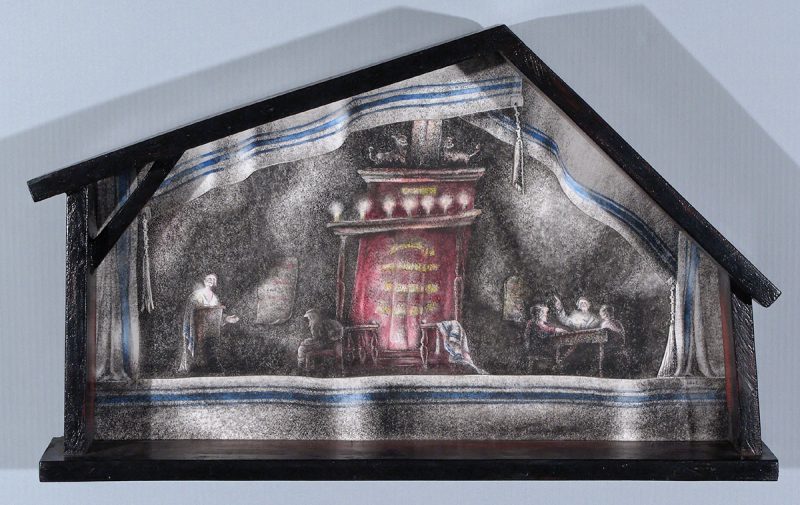One of my colleagues recently assembled a group of images from the Museum’s collection which pictured solo activities, something we can all identify with while working remotely and maintaining social distancing in many places around the world.

One of the images from that group is of a man working at a drafting table, with the title: ”Sam Leve at drafting board working on designs.” Our catalog record adds more information – that he was working at home on the Upper West Side of Manhattan when the photograph was taken, the year was 1948, and the photograph was donated to the Museum in 2000 and is credited to his estate the year after his death.
I was curious about who he was and what kind of designer so I began looking into the life of Sam Leve. I began with our catalog. It turns out we have 177 items in the catalog attributed to Sam Leve or his estate. Because we do not have remote access to many of our analog donor files, the electronic catalog records have been our lifelines to information about the thousands of objects in our collection.
Sam Leve was born in a Belorussian shtetl in 1908, making him 40 at the time of the photograph. His family had fled the pogroms there in 1920, arriving in the United States when he was 12. He graduated from high school at the Uptown Talmud Torah in Manhattan, in 1925. He continued his studies at the Jewish Theological Seminary and then the Yale School of Drama where he studied set design.
The earliest evidence of his work in our collection is a program from an operetta, Shabes Bei Yiden, performed at his old high school in 1930 with “scenic effects” by Sam Leve.
Other items in our collection show that he had a long and successful career in both the Jewish theater world and on Broadway. His many objects in our collection include those detailing the Jewish theater portion of Sam Leve’s career.

These objects track the Jewish part of Leve’s life in the theater as a set and lighting designer beyond his work in the Yiddish theater; throughout his career Leve designed fundraising and celebratory events for Jewish organizations such as Israel Bonds and the America-Israel Cultural Organization, and smaller organizations like Tranquillity Camp, which he attended as a young immigrant.


Leve is perhaps best known for his early work designing productions for the Federal Theatre Project (sponsored by the Works Progress Administration), and with Orson Welles and the Mercury Theater. More information on Leve’s work not on Jewish themes can be found in a collection of his work with Welles, and his extensive work on Broadway, at the New York Public Library. Leve was a longtime member of the United Scenic Artists Union.

Sam Leve died in 1999. His obituary and some of the paid death notices in The New York Times as well as other sources reveal a warm and caring side to Sam not readily apparent in his finished work, but which reveal the depth of character and strong identity with his Jewish roots that he managed to maintain throughout his life and work.
